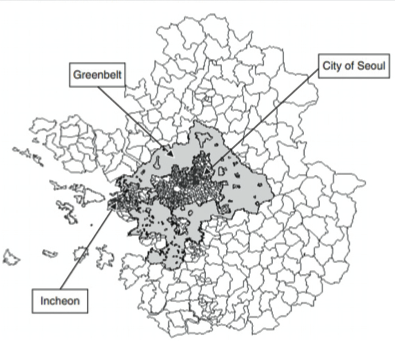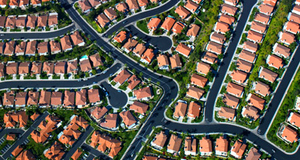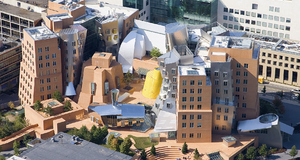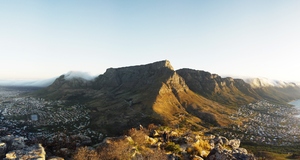From Discussions VOL. 10 NO. 1South Korea's Sustainable Urban Planning and Environmental Technology
IN THIS ARTICLE
AbstractSouth Korea's rapid urbanization began in the 1950s and greatly increased the urban population as well as the country's economy. However, the development has been highly damaging to the environment surrounding high-density metropolitan areas such as Seoul. With cutting-edge technology and modern science, green methods of urban development are underway. The ubiquitous city concept, landscape character assessment, and ecofriendly waste management are all facets of an eco-friendly city model that are discussed in this research. In the process of rapid urbanization spurred on by an increasingly globalizing world, the inhabitants of mega-cities make an important tradeoff between improved quality of life and the systematic destruction of the natural organization of land and the environment. In the developing nations of East Asia, rapid urbanization and economic growth are visibly apparent, but so are urban environmental problems in overcrowded cities. The complexity of the issue is ever-growing because slowing economic growth is not a favorable solution, but sustainable urban development is still a viable possibility. In the case of South Korea, several municipalities are partaking in an effort to move toward sustainability in different sectors through modern technology. For instance, Kwangmyung City is "at the cutting edge of environmental administration of local government" with its environmental infrastructure that is more advanced than other local governments (Kim, 2002). 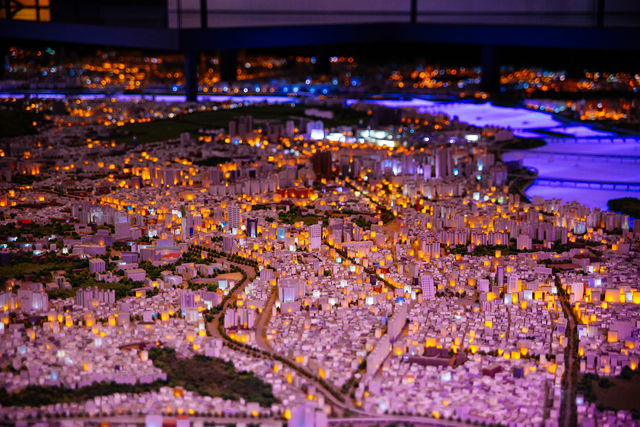
Scale model of Seoul from the Seoul Museum of History. Photo: Flickr/Seoul Korea ND-2 Seoul, the nation's capital, is in the process of "growth," "high industrialization ratio," "rapid urbanization," "mass The paper will examine each factor and discuss how the process of industrial development causes serious environmental damage, and how modern urban planning and technology have great potential to reverse those damages (Bai and Imura, 2000). It will discuss the details of the forms of technology used in the two South Korean case studies, as well as the impact they are making in urban sustainability. This paper will discuss modern urban planning and environmental technology and their roles in eco-friendly urbanization. The goal of this paper is to persuade members of the general public, especially those who live in metropolitan areas, to make their lifestyles more eco-friendly and to prompt more intensive research into green technology that would help curb the effects of urban pollution and environmental damage. Korea's Urbanization: An OverviewThe Republic of Korea experienced an unprecedented increase in the rate of urbanization over the past 40 years since the end of the Korean War. The level of urbanization rose drastically from 35.8 percent in 1960 to 85.0 percent in 1995 (Kwon, 2001). The national government played an important role in decisively modernizing South Korea through urban growth over the decades; for example, the city of Ulsan was constructed in 1963 through a series of ambitious government initiatives and grew into an important industrial town (Kwon, 2001). Population centralization in urban areas is strongly incited by the prospect and availability of take up jobs as laborers within the city has proven to be problematic, even with the number of blue-collar workers decreasing. Also, the trend of globalization demands a more modern and urban infrastructure, and high-class and educated professionals are sensitive to the living and working environment (Kwon, 2001). These factors have contributed to the rise of densely packed blocks of consequences that entail heavy development. A combination of socialist and capitalist economic policies has proven to be very effective in boosting the industrial productivity of South Korea, but this industrialization has taken a severe toll on the environment. Since the 1960s, the government has been ambitiously pushing for an export-oriented development strategy, and heavy industrial centers were formed in urban areas, leaving the rural parts of the country largely underdeveloped. The economic drive that produced such rapid growth also proved harmful to the lands surrounding major urban centers, with overcrowding, causing most of the damage. It is particularly important to take into consideration the geography of South Korea and how cities were built in order to thrive in the surrounding ecosystem and adapt to the natural formation of the land, oftentimes causing damage to the environment (Kwon, 2001). Sustainable Urban Planning in South Korea's Metropolis: Seoul's GreenbeltUrban congestion and high-density cities with sprawling development are significant contributors to Korea's urban environmental problems. The largest share of Seoul's carbon emissions comes from the residential sector and continues to increase every year. The average annual growth rate of carbon emissions in Seoul is 1.63 percent each year (Dhakal et al., 2003), and per capita carbon emission levels skyrocketed in the 1990s, which was when CO2 Cities are "centers of high living standards, population density, pollutants of air and water, and producers of solid wastes" and also centers of massive consumerism and infrastructure development (Dhakal et al., 2003). Highly urbanized areas are generally viewed as places of modernity, high class, and sophistication to most South Koreans, leading to high consumerism. As high demand for land as population drastically increased, green areas around cities decreased by 1480 km2 in the past 10 years as natural land was paved to provide space for business buildings and apartment complexes (Yoon and Lee, 2003). Green areas include land used for agriculture and mountainous areas. In Seoul, along with several other rapidly urbanized mega-cities in East Asia, there is a serious situation of environmental degradation that can impact the health and well-being of urban dwellers. In fact, the South Korean government already has in place some measures to control urban sprawl; the greenbelt, built around the city of Seoul in the 1970s, is one such measure. Seoul's greenbelt now measures about 1,566.8 km2, which accounts for about 13.3 percent of the Seoul metropolitan area (Bengston and Youn, 2005). Figure 1 illustrates the size of the greenbelt surrounding Seoul. Figure 1. The Capital Region (Gyeonggi Province) and Seoul's greenbelt. Source: "Seoul's Greenbelt: An Experiment in Urban Containment" by Bengston and Yeo-Chang, 2005.
As is evident in Figure 1, the greenbelt is essentially a "belt" of greenery surrounding the city limits. The greenbelt was designed to corral urban sprawl and create a more compact infrastructure, thereby increasing Youn, 2005). Most importantly, however, it strived to provide a "wide range of ecosystem services such as air control, and water supply and quality" and therefore has many important environmental implications (Bengston and Youn, 2005). These benefits however, become less significant as the increasingly heavy congestion within the city outweighs the amenity values and the environmental value of the greenbelt. The greenbelt's initial goal, the containment of urban sprawl, did not take into account Without the space to expand its diameters, the city has become more and more heavily congested (Bengston and Youn, 2005). Also, the residents that live in or near the greenbelt have experienced a large decrease in property values over the past few decades since the inception of the policy, which creates an unequal balance in the quality of life of those who live in the city and those who live in the urban fringe (Bengston and Youn, 2005). congestion within the city is another ironic side effect of the greenbelt. Urban planning is a complex issue that spans a wide range of concerns, intertwining with social, economic, and environmental sectors of the city. Although the greenbelt may have been an ideal solution to pollution before heavy development began, it is after its inception. A more expansive policy, adapted to the modern socio-economic and environmental issues, is required for large cities such as Seoul. This paper will discuss methods of urban planning from the external view of the city and the thorough changes in internal infrastructure. Landscape Character AssessmentThe United Kingdom has developed a technique called landscape character assessment that takes into account the diversity of the land in a detailed survey to preserve biodiversity and sustainable land use. Landscape character is defined as "a distinct and recognizable pattern of elements that occur consistently in a particular type of landscape" and is the main component of planning land for development (Kim and Pauleit, 2005). This method can be applied to the landscape of South Korean cities because preserving biodiversity and sustainably developing land are two major concerns when facing rapid urbanization. Landscape character assessment consists of two main stages: 1) identifying the main distinguishing features of landscape character unites and creates a detailed map of the characteristics, and 2) providing quantitative data for biodiversity conservation (Kim and Pauleit, 2005). In the example of the Kwangju city region in Kim and Pauleit's study, it was discovered that the greatest and most rapid changes in landscape occur in the urban fringes and the greatest biodiversity exists in the wooded highlands (2005). Human developments, such as the creation of small commercial agricultural plots and the covering of high biodiversity-value lands with business complexes, contribute to a systematic destruction of ecosystems; therefore, the stakeholder community and policymakers should take into consideration the best ways to plan a city in accordance with the surrounding environment and its characteristics. Efficient urban planning is possible the most effective and cost-saving method of curbing the negative environmental effects of rapid urbanization. An upon agricultural land, thereby preserving the ancient and traditional agrarian aspect of the Korean society. Also, from landscape character assessment, as the latter does not seek to forcefully contain urban sprawl. Heavy urban development is inevitable in actively industrious countries such as South Korea; therefore, planners should seek ways to use the natural land that minimizes the loss of its initial welcoming. Landscape character assessment, takes into account the way land changes and the pattern it follows (Kim and Pauleit, 2007). Preserving biodiversity is the highest priority, and this method has been successful in many parts of the United Kingdom and across the world (Kim and Pauleit, 2007). The process also calls for a close working connection between the stakeholders, the community, and environmental scientists, which environment they inhabit in a more positive way. Landscape character assessment has proven to be a useful tool in curbing the human forces on the natural landscape in the U.K. (Kim and Pauleit, 2007). It is important to note, however, that the data gathered in this method are independent of the social impacts that also shape the land. Although this method addresses the problems immediately associated with urban sprawl, such as the deterioration of the surrounding land and the damage to biodiversity, it fails to take into account how people are affected by the changes; in this way, landscape character assessment can be viewed to be more ecocentric than anthropocentric. Therefore, landscape character assessment should not be the sole method of developing green infrastructure. South Korea is highly developed in technology and city planners of major metropolitan areas are seeking ways to apply technology to simultaneously improve the lives of the residents and the environment.Continued on Next Page » Suggested Reading from Inquiries Journal
Inquiries Journal provides undergraduate and graduate students around the world a platform for the wide dissemination of academic work over a range of core disciplines. Representing the work of students from hundreds of institutions around the globe, Inquiries Journal's large database of academic articles is completely free. Learn more | Blog | Submit Latest in Environmental Studies |

